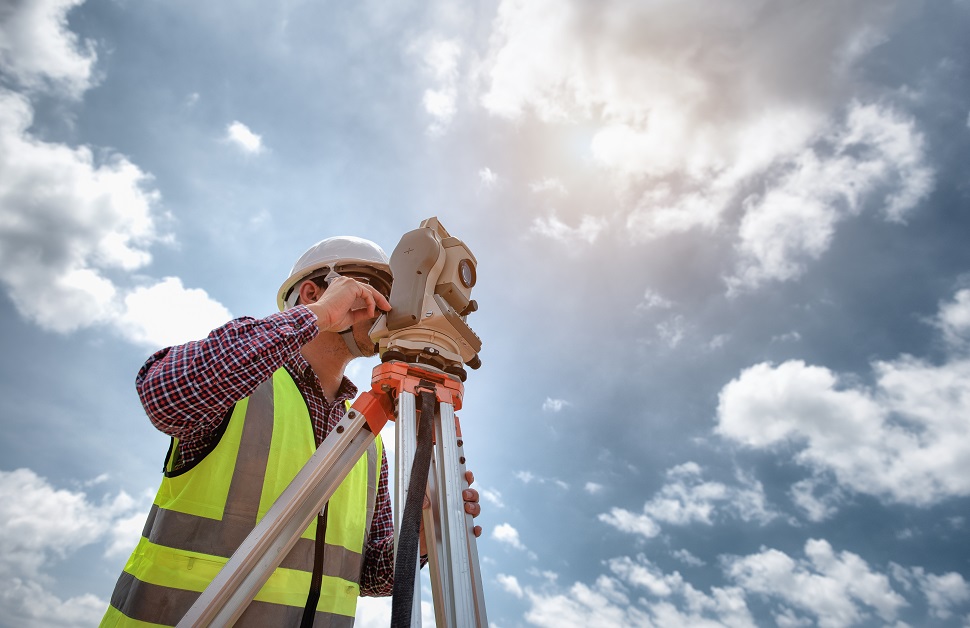Topographical Surveying: Mapping the Land for Better Planning and Design
Topographical Surveying: Mapping the Land for Better Planning and Design
Blog Article
Just How Setting Out Engineering Ensures Accuracy in Building Projects
Establishing out design is a necessary discipline that underpins the accuracy and honesty of building jobs, offering as the structure upon which effective building is developed. Understanding these details can disclose substantial understandings into the more comprehensive ramifications for job efficiency and success.
Importance of Establishing Out Engineering
In the realm of construction and civil design, the value of setting out design can not be overstated. This critical process works as the foundation for any type of successful building job, making sure that all subsequent construction activities align properly with the style specifications. Laying out design involves the exact translation of building and design illustrations right into the physical website, establishing recommendation factors that guide building workers throughout the project.
Precise laying out lowers the risk of expensive errors that can emerge from imbalances, which may cause structural shortages or delays. By carefully determining and marking bottom lines, professionals develop a structure that promotes adherence to develop measurements, inevitably protecting the honesty of the framework. Moreover, appropriate laying out improves the efficiency of building procedures, enabling groups to collaborate with self-confidence and accuracy.

Trick Techniques and Devices
Reliable laying out engineering counts on a mix of essential techniques and devices that make certain accurate placement and dimension on website. One basic strategy is triangulation, which makes use of the concept of forming triangulars to determine precise locations. By determining fixed points and utilizing well-known distances, engineers can precisely lay out the format of a job.
An additional essential technique is using an Overall Station, a sophisticated evaluating tool that integrates digital theodolite and range dimension capabilities. This gadget permits for fast and precise measurements, considerably enhancing performance on site. Additionally, Global Positioning System (GPS) innovation has transformed laying out practices, making it possible for real-time positioning with high accuracy, especially in large tasks.
Along with these technologies, standard devices such as level, measuring tapes, and plumb bobs remain vital. They offer necessary checks and balances in alignment tasks. The mix of modern instruments and standard strategies produces a durable framework for laying out engineering. By utilizing these methods, experts can make sure that every aspect of the building task is executed with precision, ultimately causing enhanced top quality and decreased errors throughout the construction process.
Common Obstacles in Laying Out
Establishing out design, while crucial for task success, often encounters numerous usual challenges that can prevent accuracy and efficiency. One substantial obstacle is the potential for human mistake throughout dimensions and computations. Even minor discrepancies can bring about substantial imbalances in the general job. In addition, environmental aspects, such as unfavorable climate conditions, can impact exposure and the accuracy of devices, complicating the laying out process.
Another obstacle emerges from insufficient website paperwork. Without extensive and updated plans, designers may struggle to properly analyze the site conditions, leading to mistakes. The visibility of existing structures or unforeseen below ground utilities can develop obstacles that were not accounted for throughout the first planning phase.
Interaction in between group members is additionally crucial; misunderstandings or absence of clearness can result in inconsistent data interpretation. Time restraints commonly push groups to rush via the setting out process, raising the possibility of mistakes. Resolving these challenges link requires precise planning, reliable communication, and durable training to make sure that the laying out phase satisfies the stringent criteria required for job success.
Impact on Project Performance
Accurate laying out engineering directly influences task effectiveness, as exact dimensions and placements are fundamental to successful implementation. When the preliminary continue reading this format is carefully specified, it reduces the risk of mistakes throughout building, which can cause expensive delays and revamp. This precision enables for a structured operations, where succeeding professions can run without interruption, sticking to the fixed timelines.
Furthermore, efficient laying out promotes much better control among numerous groups included in the task. With clear referral subcontractors, service providers and points can align their tasks more effectively, reducing the probability of miscommunication and conflicts on-site. The clarity given by accurate laying out likewise improves material use, as sources can be assigned and supplied according to the particular requirements of the project, protecting against wastefulness and maximizing supply chain monitoring.
In addition, adherence to developed criteria cultivates a culture of liability, as each team member can plainly comprehend their responsibilities and efficiency assumptions. Eventually, the effectiveness obtained via accurate establishing out design not just increases job conclusion but likewise adds to general expense financial savings, making sure that the job follows budgetary restraints while preserving high quality standards.
Study and Success Stories
Successful jobs usually offer as criteria in the industry, highlighting the extensive influence of thorough establishing out design. One notable instance is the building of the London Crossrail, a large framework task that required specific placement and control across many stakeholders. By employing advanced establishing out techniques, the task achieved amazing precision, reducing pricey delays and ensuring structural stability throughout its considerable underground passages.
Another excellent job is the Burj Khalifa in Dubai, where specific establishing out was essential due to the building's extraordinary elevation. Engineers used advanced innovation to guarantee that every component was properly positioned, directly adding to the skyscraper's security and security. This meticulous attention to information has actually set a requirement for future skyscraper building and constructions.
Additionally, the Sydney Opera Home renovation showcased Read More Here the advantages of detailed laying out engineering. By utilizing 3D modeling and specific measurements, the team enhanced the building's structural performance while preserving its iconic style.
These success tales not only highlight the relevance of laying out engineering however also underscore its function in achieving quality in building and construction, inevitably bring about safer and more effective tasks.
Conclusion
In final thought, setting out design is important to achieving accuracy in structure jobs. The effective execution of projects depends greatly on the fundamental duty of setting out design.
Establishing out design is a vital self-control that underpins the accuracy and honesty of structure jobs, serving as the structure upon which effective building is developed. Establishing out design involves the precise translation of building and engineering illustrations into the physical website, developing recommendation points that lead building employees throughout the job.
In addition to making certain conformity with layout specs, setting out design adds to overall job planning and implementation (construction surveys). Therefore, the relevance of setting out design prolongs past mere accuracy; it is integral to the successful distribution of building and construction projects

Report this page